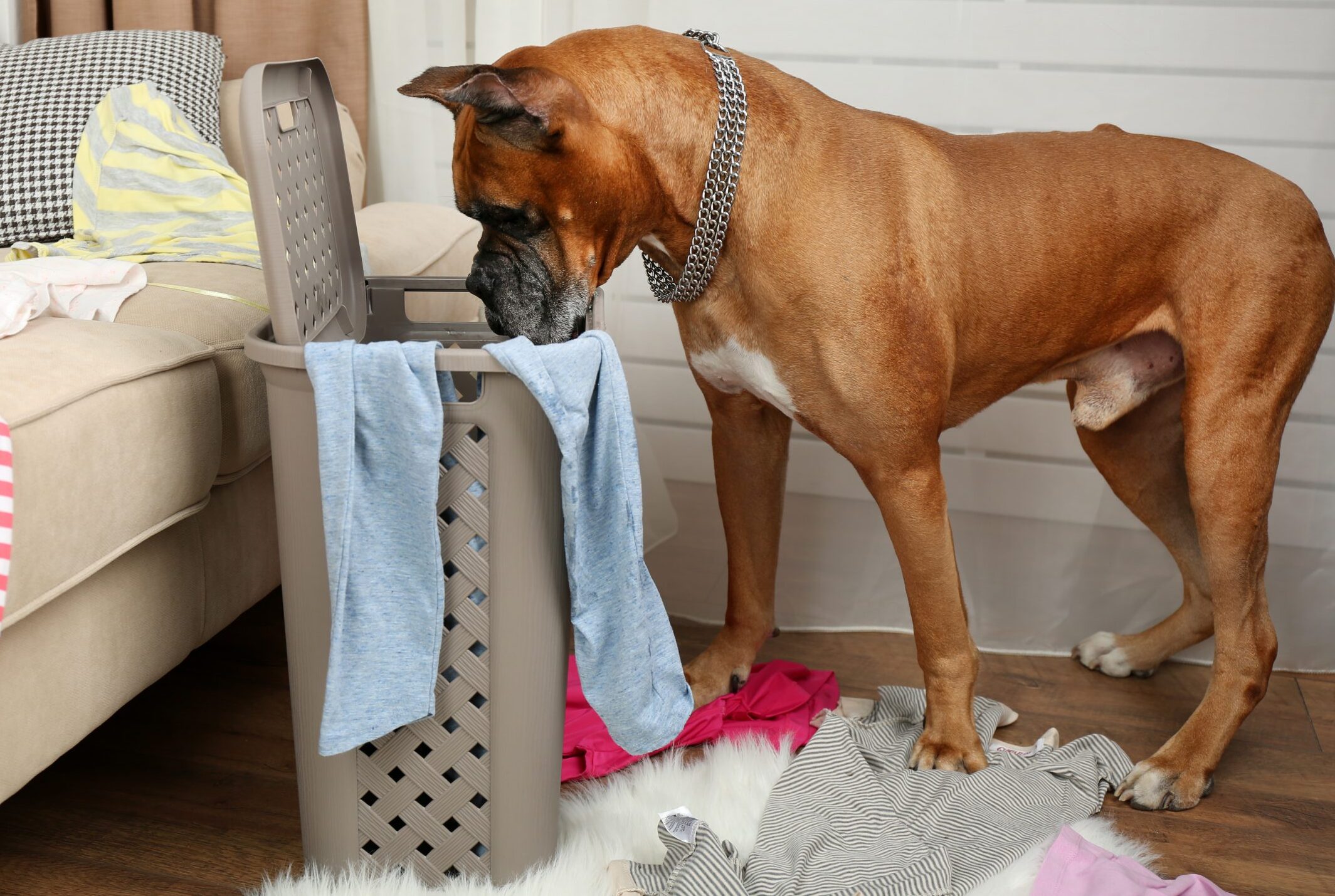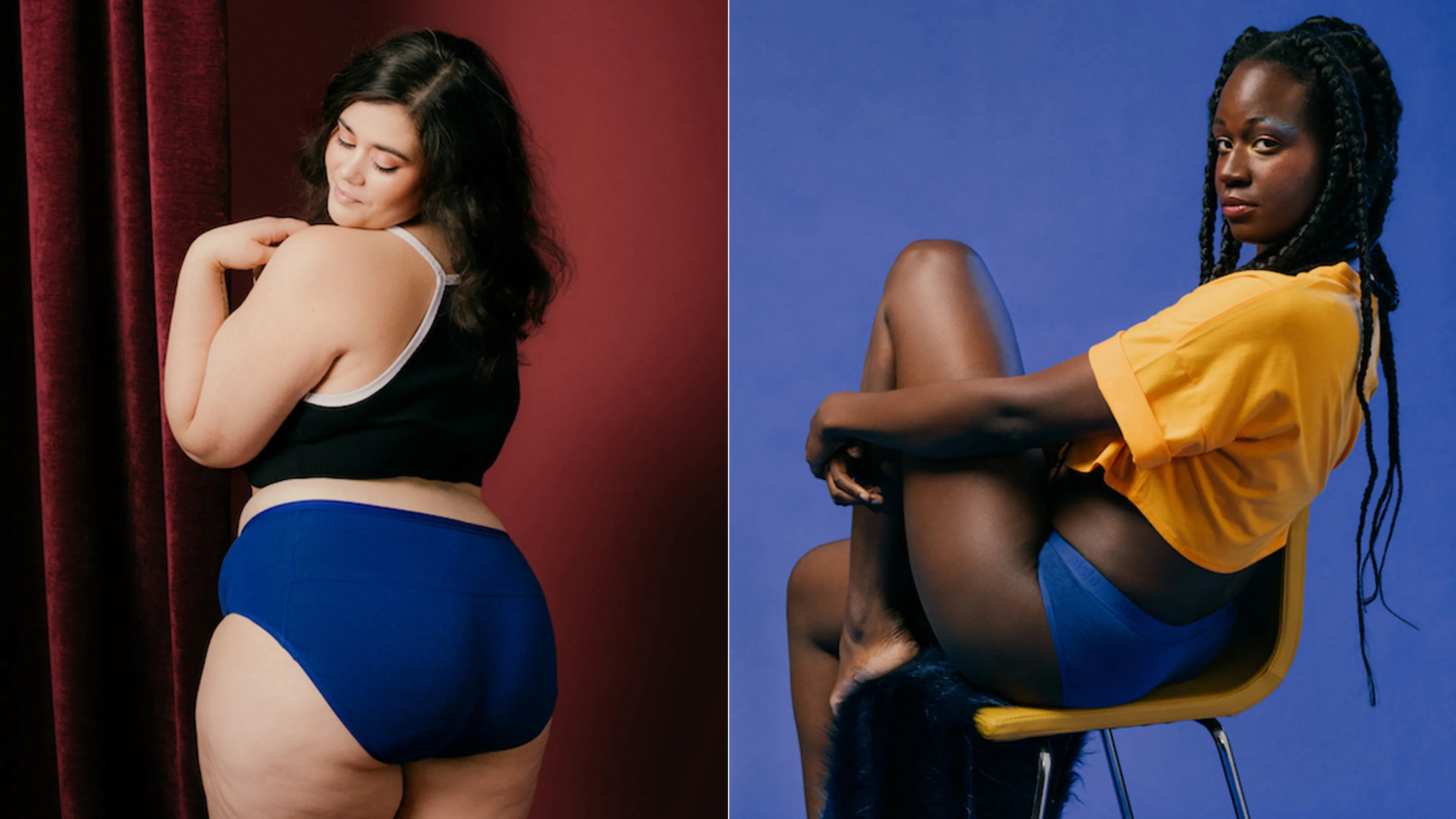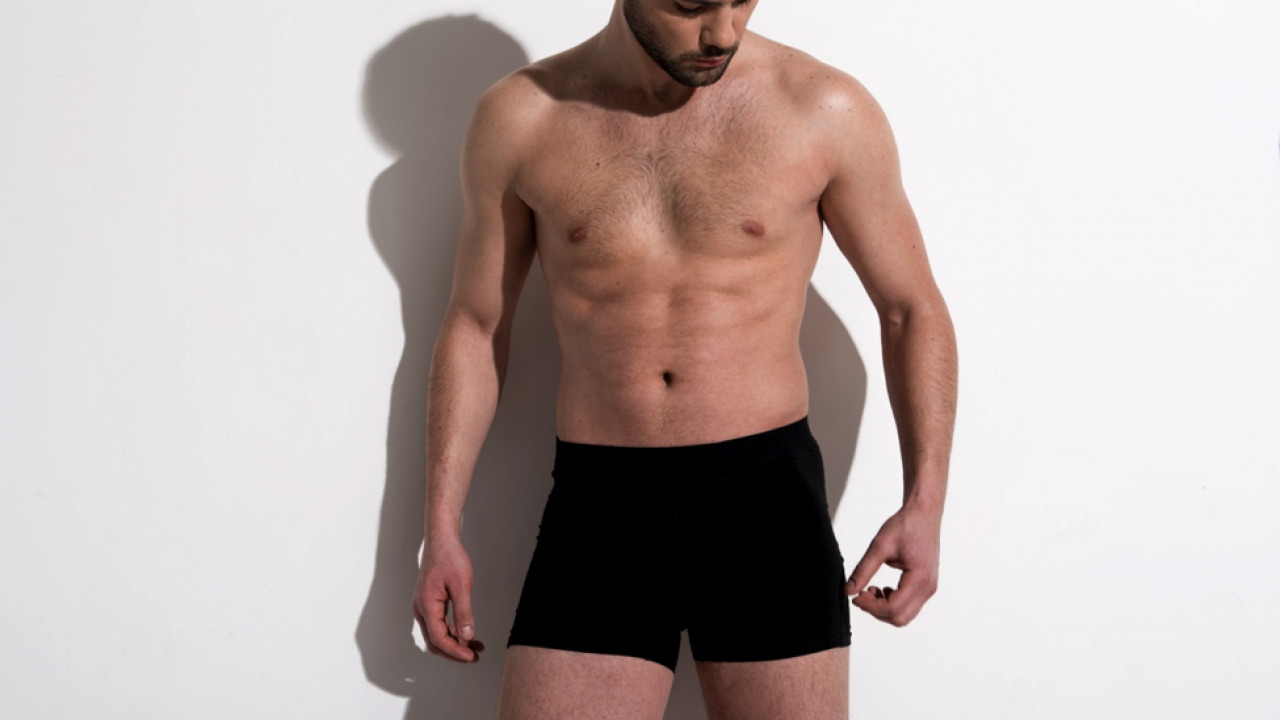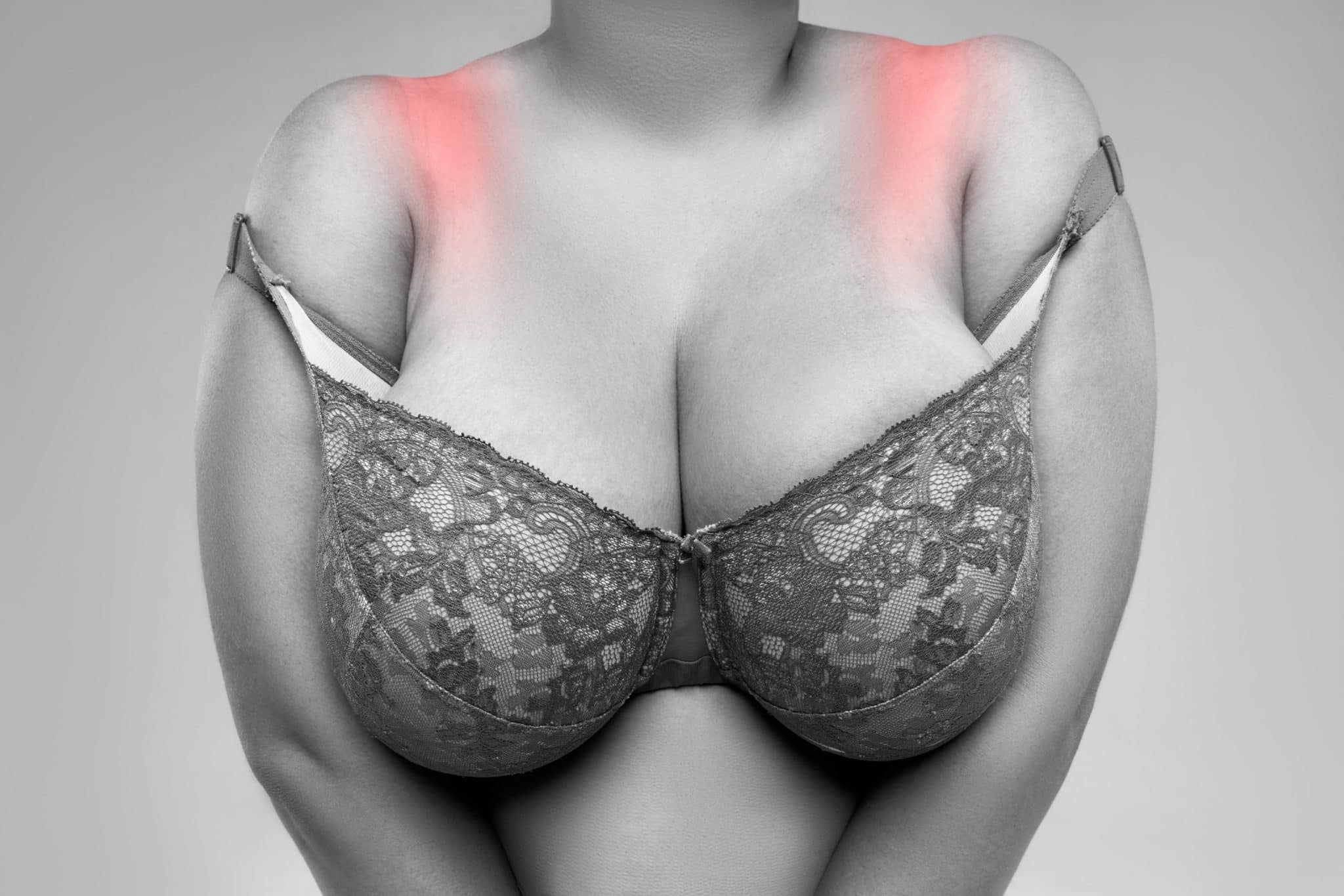

FAQs
Why Does My Underwear Go Up My Bum
Modified: August 2, 2023
Find answers to your general questions about why underwear might ride up your bum. Expert insights and tips for a comfortable fit.
(Many of the links in this article redirect to a specific reviewed product. Your purchase of these products through affiliate links helps to generate commission for Under-tec.com, at no extra cost. Learn more)
Table of Contents
- Introduction
- Understanding the Anatomy of Underwear
- Reasons for Underwear Riding Up
- Incorrect Sizing
- Poor Quality Material
- Wrong Style or Cut
- Lack of Elasticity
- Wearing Underwear That’s Too Tight
- Moisture and Friction
- Tips to Prevent Underwear from Riding Up
- Choosing the Right Size
- Opting for High-Quality Materials
- Trying Different Styles and Cuts
- Considering Underwear with Added Elasticity
- Avoiding Tight Underwear
- Managing Moisture and Reducing Friction
- Conclusion
Introduction
Welcome to the world of underwear conundrums! If you’ve ever found yourself constantly adjusting your undergarments because they keep riding up your bum, you’re not alone. This common annoyance can be both uncomfortable and embarrassing, but fear not – there are reasons why it happens and solutions to help alleviate the problem. In this article, we will delve into the reasons why underwear tends to ride up and provide you with tips to prevent it from happening.
Understanding the anatomy of underwear is the first step to unraveling this mystery. Underwear is designed to provide support, coverage, and a comfortable fit. However, the combination of body movements, fabric materials, and improper sizing can result in your underwear sliding out of place and wedging uncomfortably up your derriere.
There are several factors that contribute to underwear riding up. The most common culprits include incorrect sizing, poor quality material, the wrong style or cut, lack of elasticity, wearing underwear that’s too tight, and moisture and friction. Understanding these factors will help you pinpoint the specific cause and find a suitable solution to keep your underwear where it belongs.
In the next sections, we will delve deeper into each of these factors and provide actionable tips to prevent your underwear from making unexpected appearances up your bum. So, get ready to bid farewell to the uncomfortable feeling of constantly adjusting your undergarments and embrace a more comfortable and confidence-boosting underwear experience.
Understanding the Anatomy of Underwear
Before we delve into the reasons why your underwear rides up, it’s important to understand the anatomy of this essential garment. Underwear typically consists of a waistband, a front panel that covers the genital area, a back panel that covers the buttocks, and leg openings. The design and construction of these components play a significant role in how well your underwear fits and stays in place.
The waistband is intended to provide support and keep the underwear in position around your waist. It should be snug but not overly tight, as a tight waistband can contribute to the underwear riding up. The front panel is designed to provide coverage and support for your genital area. It should fit comfortably, without being too loose or too tight.
The back panel is where the problem of riding up often occurs. It should be wide enough to cover your buttocks fully, providing adequate coverage and support. However, if the back panel is too narrow or if the fabric is not stretchy enough, it can easily migrate upwards and become wedged in your bum.
Another important aspect of underwear construction is the leg openings. These should be snug enough to prevent shifting or bunching up, but not so tight that they dig into your skin or restrict movement. If the leg openings are too loose, they can contribute to the underwear riding up.
It’s essential to choose underwear that is well-constructed with attention to these key design elements. Investing in quality underwear that is specifically designed to provide a secure and comfortable fit will go a long way in preventing the annoying problem of your underwear riding up.
Now that we have a basic understanding of underwear anatomy, let’s explore the various factors that can cause your underwear to ride up and how to address them effectively.
Reasons for Underwear Riding Up
Underwear riding up is a common issue that many people face. It can be frustrating and uncomfortable, but understanding the reasons behind this phenomenon can help you find ways to prevent it from happening. Let’s take a closer look at some of the main factors that contribute to underwear riding up.
Incorrect Sizing: One of the primary culprits behind underwear riding up is wearing the wrong size. If your underwear is too small, it is more likely to shift and migrate upward. On the other hand, if it is too big, it may not provide enough support and structure to stay in place.
Poor Quality Material: The fabric of your underwear plays a significant role in how well it stays in position. Cheap or low-quality materials may lack the necessary stretch and elasticity, causing them to lose shape and ride up throughout the day.
Wrong Style or Cut: Different underwear styles have variations in their design, including the width and shape of the back panel. Some styles, such as thongs or Brazilian briefs, are more prone to riding up due to their minimal back coverage. Choosing a style that offers more coverage at the back can help to minimize this problem.
Lack of Elasticity: Elasticity is crucial in keeping your underwear in place. If the elastic bands around the waist or leg openings have lost their elasticity, they will be more likely to stretch out and ride up over time.
Wearing Underwear That’s Too Tight: While it may seem counterintuitive, wearing underwear that is too tight can contribute to riding up. When the fabric is stretched to its limit, it can’t properly hug your body and is more likely to shift out of place.
Moisture and Friction: Moisture and friction can also play a role in causing your underwear to ride up. When your skin becomes sweaty or damp, it can create a slippery surface, making it easier for your underwear to slide up and get wedged in your bum.
By understanding these reasons for underwear riding up, you can take proactive steps to address them and prevent this annoyance from happening. In the next sections, we will explore actionable tips and solutions to help you keep your underwear comfortably in place.
Incorrect Sizing
One of the most common reasons why underwear rides up is wearing the incorrect size. Whether it’s too small or too big, ill-fitting underwear can cause discomfort and make it more prone to sliding out of place. Let’s explore the impact of incorrect sizing on the ride-up issue and how to address it.
Too Small: When you wear underwear that is too small, it can stretch and pull on the fabric, causing it to migrate upwards. The waistband may dig into your skin and the leg openings may dig into your thighs, resulting in a constant need to adjust and reposition your underwear. To avoid this, ensure that your underwear fits snugly but comfortably without feeling overly tight.
Too Big: On the other hand, wearing underwear that is too big can also lead to riding up. If the waistband lacks sufficient grip on your waist or the leg openings are loose, the fabric may bunch up and move around as you go about your day. This can be not only uncomfortable but also visually unappealing. Select underwear that provides a secure fit without excess fabric.
So, how can you ensure you’re wearing the correct size of underwear? Start by measuring your waist and hips using a measuring tape to determine your size according to the manufacturer’s guidelines. Keep in mind that different brands and styles may have variations in their sizing, so it’s essential to refer to the sizing chart for each specific brand.
Furthermore, pay attention to your body shape and personal preferences. Some individuals may prefer a tighter fit, while others may prefer a looser fit. Experiment with different sizes and styles to find what works best for you. Remember, the right size should provide a comfortable fit with enough room for movement without feeling overly constricting or loose.
Lastly, it’s important to regularly reassess your underwear size, as body measurements can change over time due to factors such as weight fluctuations or muscle gain. If you find that your current underwear no longer fits properly, take the time to measure yourself and invest in new pairs that will provide the right fit and reduce the likelihood of riding up.
By ensuring that you wear the correct size of underwear, you can significantly minimize the issue of riding up and enjoy a more comfortable and secure fit throughout the day.
Poor Quality Material
The quality of the material used in your underwear can greatly impact its tendency to ride up. Cheap or low-quality fabrics may lack the necessary stretch and elasticity to maintain their shape and stay in place. Here’s why the material matters and how to choose quality underwear to prevent riding up.
When it comes to underwear, opt for fabrics that offer a good balance of stretch and support. Natural fibers like cotton are a popular choice as they are breathable, hypoallergenic, and have some elasticity. Cotton blends, such as cotton with elastane or spandex, can provide even better stretch and shape retention.
Avoid underwear made from synthetic materials that are not breathable, such as polyester or nylon. These fabrics can trap moisture, leading to discomfort, increased friction, and a higher likelihood of your underwear riding up. Additionally, low-quality synthetic materials may lack the necessary elasticity and durability, causing them to lose shape quickly.
Investing in high-quality underwear not only ensures better comfort but also longevity. Look for reputable brands that use quality materials and have a track record for producing well-constructed underwear. While they may come at a higher price point, the investment is worth it in terms of comfort, durability, and reducing the risk of riding up.
When shopping for underwear, pay attention to the fabric composition listed on the label. Aim for a blend that includes a significant percentage of cotton or other natural fibers. A higher percentage of elastane or spandex can also provide better stretch and shape retention. Avoid materials that are predominantly synthetic, as they can contribute to the riding-up issue.
It’s also essential to follow proper care instructions to maintain the integrity of the fabric. Wash your underwear according to the recommended guidelines, avoiding harsh detergents or bleach that can weaken the fibers. Drying them on low heat or air-drying can help preserve the elasticity and shape of the fabric, ensuring your underwear stays in good condition for longer.
By choosing underwear made from high-quality materials and following proper care practices, you can minimize the problem of your underwear riding up and enjoy a more comfortable and reliable fit.
Wrong Style or Cut
The style and cut of your underwear can significantly impact its tendency to ride up. Different styles have varying designs and coverage, which can affect how well they stay in place. Let’s explore the impact of the wrong style or cut on the riding-up issue and how to choose underwear that minimizes this problem.
Some underwear styles, such as thongs or Brazilian briefs, are more likely to ride up due to their minimal back coverage. These styles have narrower back panels, which can allow the fabric to shift and migrate upward with movement. If you find yourself constantly adjusting your underwear throughout the day, it might be worth considering styles that offer more coverage at the back.
Mid-rise or full-coverage briefs, boxer briefs, or boyshorts are styles that tend to provide better back coverage and a more secure fit. The wider back panels on these styles help to prevent the fabric from sliding up and getting wedged in your bum. They also offer the benefit of providing more comfort and support, making them a popular choice for those who prefer reliable coverage.
In addition to the back coverage, also pay attention to the leg openings of your underwear. Styles with leg openings that are too loose or too tight can contribute to riding up. Opt for underwear with leg openings that fit snugly against your thighs, providing a secure but comfortable fit. This helps to prevent the fabric from shifting and bunching up as you move throughout the day.
Experimenting with different styles and cuts can also help you find the right fit for your body shape and personal preferences. What works for someone else may not work for you, so don’t be afraid to try out different options to see what provides the best combination of comfort and prevention against riding up.
Additionally, keep in mind that the right underwear style and cut can also depend on the type of outfit you’re wearing. For example, if you’re wearing tight-fitting pants or skirts, a seamless or low rise style might be more suitable to avoid visible panty lines. Consider your outfit’s requirements and choose the appropriate style that balances both fashion and functionality.
By choosing the right style and cut of underwear, you can minimize the risk of riding up and enjoy a more comfortable and confidence-boosting underwear experience.
Lack of Elasticity
The elasticity of your underwear plays a crucial role in keeping it in place. When the elastic bands around the waist and leg openings lose their stretchiness, they are more likely to lose grip and allow the fabric to ride up. Let’s delve into the implications of a lack of elasticity and how to choose underwear that maintains its shape and fit.
Elasticity is what allows the waistband and leg openings of your underwear to stay snug and secure against your body. Over time, long-term use and frequent washings can cause the elastic to stretch out, weaken, or lose its ability to bounce back. As a result, the underwear may start to sag, shift, and ride up throughout the day.
When selecting underwear, examine the quality of the elastic bands. They should feel firm and have sufficient tension to hold the underwear in place without being overly tight or causing discomfort. High-quality elastic can provide better durability and maintain its shape even after multiple washes.
Consider opting for underwear with reinforced elastic bands or wide waistbands. These features can help distribute the tension more evenly, providing a more secure fit and reducing the likelihood of riding up. Additionally, look for brands that specifically emphasize the elasticity and durability of their underwear, as these are indicators of a higher quality product.
It’s also important to follow proper care instructions to keep the elastic in optimal condition. Avoid using bleach, harsh detergents, or fabric softeners, as these can weaken the elastic fibers over time. Instead, wash your underwear on a gentle cycle using mild detergent and air-dry them to preserve the elasticity.
Regularly reassess the elasticity of your underwear. If you notice that the bands are becoming loose or stretched out, it might be time to replace them. Investing in new pairs of underwear with strong, resilient elastic will help ensure a more comfortable and secure fit, minimizing the troublesome issue of riding up.
In summary, the elasticity of your underwear is vital in preventing riding up. Choose underwear with well-constructed elastic bands, reinforce them when possible, and follow proper care practices to maintain their elasticity. By doing so, you can enjoy underwear that stays in place and provides optimal comfort throughout the day.
Wearing Underwear That’s Too Tight
While it may seem counterintuitive, wearing underwear that is too tight can contribute to the problem of riding up. When the fabric is stretched to its limit, it can’t properly hug your body and is more likely to shift out of place. Let’s explore the impact of tight underwear and how to ensure a comfortable and secure fit.
When underwear is excessively tight, it puts unnecessary pressure on your body and restricts movement. This tension can cause the fabric to dig into your skin, leading to discomfort and friction. It can also disrupt the natural alignment of the underwear, allowing it to move out of position and ride up.
To achieve a proper fit, your underwear should provide support and coverage without feeling overly constricting. Consider giving your body some breathing room by opting for a size up or choosing styles designed for a looser fit. Look for underwear with a bit of stretch or a comfortable waistband that sits comfortably on your hips without squeezing too tightly.
Oftentimes, people mistakenly believe that wearing tight underwear will provide better support or enhance their body shape. However, this is not the case and can, in fact, contribute to discomfort and the riding-up issue.
Take note of your body’s natural shape and how your underwear fits. If you notice marks, indentations, or discomfort after wearing tight underwear, it’s time to switch to a more comfortable size. Remember, the purpose of underwear is to provide support and coverage while allowing for natural movement.
Properly fitting underwear should stay in place and feel comfortable throughout the day, without the need for frequent adjustments. If you find yourself constantly tugging at your underwear or experiencing discomfort, it’s a clear sign that it’s time to reevaluate the size and fit.
Ultimately, choosing underwear that is neither too tight nor too loose will help prevent riding up and ensure a comfortable fit. Listen to your body, prioritize comfort, and don’t be afraid to try different sizes and styles to find the perfect balance for you.
Moisture and Friction
Moisture and friction can play a significant role in the problem of underwear riding up. When your skin becomes sweaty or damp, it creates a slippery surface that makes it easier for your underwear to slide up and get wedged in your bum. Let’s dive into the impact of moisture and friction and explore ways to manage them.
Sweat and moisture can accumulate in the groin area throughout the day, especially during physical activity or in hot weather. This moisture can reduce the friction between your skin and the fabric of your underwear, leading to a higher chance of riding up.
To manage moisture and reduce the risk of riding up, consider the following tips:
Choose Breathable Fabrics: Opt for underwear made from breathable fabrics like cotton or moisture-wicking blends. These materials allow air to circulate and evaporate moisture more efficiently, keeping you drier and reducing the risk of slippery fabric.
Change Your Underwear Frequently: If you tend to sweat a lot or engage in physical activities that generate moisture, consider changing your underwear more frequently throughout the day. Fresh, dry underwear will provide better grip and reduce the likelihood of riding up due to excess moisture.
Use Absorbent Powders or Moisture-Wicking Products: Applying absorbent powders or using moisture-wicking products in the groin area can help keep the skin dry and minimize friction. These products can absorb excess moisture and reduce the slipperiness that can contribute to the riding-up issue.
Consider Seamless or Low-Friction Styles: Underwear with seamless construction or minimal seams can help reduce friction against your skin, decreasing the chances of riding up. Look for styles that have smooth, flat edges that won’t dig into your skin and exacerbate the problem.
Avoid Rough or Non-Breathable Clothing: The clothing you wear over your underwear can also contribute to moisture and friction. Avoid fabrics that trap moisture, such as synthetic materials or rough textures, as they can create more friction against your underwear. Opt for breathable, moisture-absorbing fabrics whenever possible.
By managing moisture and reducing friction, you can minimize the discomfort and inconvenience of underwear riding up. Incorporate these tips into your daily routine and choose underwear and clothing that promote breathability and moisture control, helping you stay comfortable and confident throughout the day.
Tips to Prevent Underwear from Riding Up
Dealing with underwear that constantly rides up can be frustrating. Fortunately, there are several practical tips and solutions to help prevent this issue and keep your underwear in place throughout the day. Here are some effective strategies to consider:
- Choosing the Right Size: Ensure that you are wearing the correct size of underwear. Ill-fitting underwear is more prone to riding up. Take accurate measurements and refer to the sizing charts provided by the manufacturer to find the size that suits you best.
- Opting for High-Quality Materials: Invest in underwear made from high-quality fabrics that offer stretch and durability. Look for cotton blends or moisture-wicking materials that provide both comfort and practicality.
- Trying Different Styles and Cuts: Experiment with various underwear styles and cuts to find the ones that offer better coverage and fit for your body shape. Mid-rise or full-coverage briefs, boxer briefs, or boyshorts are popular options that provide more back coverage and are less likely to ride up.
- Considering Underwear with Added Elasticity: Look for underwear with reinforced elastic bands or wide waistbands that provide better grip and ensure a more secure fit. These features can help prevent slipping and riding up throughout the day.
- Avoiding Tight Underwear: Steer clear of wearing underwear that is excessively tight. Tight underwear can restrict movement and increase the likelihood of riding up. Opt for a size that offers a comfortable yet secure fit.
- Managing Moisture and Reducing Friction: Keep the groin area dry by using breathable underwear made from moisture-wicking fabrics. Consider applying absorbent powders or using moisture-wicking products to minimize friction and reduce the slipperiness that can contribute to riding up.
Remember, what works for one person may not work for another, so it may take some time and experimentation to find the perfect combination of size, style, and material that suits your needs. Pay attention to your comfort level and make adjustments accordingly.
By implementing these tips and taking proactive measures, you can significantly reduce the issue of your underwear riding up and enjoy a more comfortable and carefree wearing experience.
Choosing the Right Size
One of the fundamental steps in preventing underwear from riding up is selecting the right size. When your underwear fits properly, it can provide the necessary support and coverage without constantly shifting and bunching up. Here are some important considerations when it comes to choosing the right size:
Accurate Measurements: Taking accurate measurements is the first step in determining your proper underwear size. Use a measuring tape to measure your waist and hips, and refer to the sizing chart provided by the manufacturer. Keep in mind that different brands and styles may have slight variations in sizing, so it’s essential to refer to the specific size guide for each product.
Comfortable Fit: The key to finding the right size is to aim for a comfortable fit. Your underwear should feel snug and secure without being overly tight or restrictive. Avoid underwear that digs into your skin or leaves marks. Look for a size that provides a balance between support and freedom of movement.
Body Shape and Personal Preferences: Everyone has a unique body shape and personal preferences when it comes to underwear fit. Some individuals may prefer a tighter fit for a more sculpted look, while others may prefer a looser fit for added comfort. Consider what feels best for you, and don’t be afraid to try different sizes and styles to find the perfect fit.
Regular Reevaluation: It’s important to regularly reassess your underwear size, as body measurements can change over time. Factors such as weight fluctuations, pregnancy, or muscle gain can all affect your sizing needs. If you find that your current underwear is no longer fitting properly or is prone to riding up, take the time to measure yourself again and invest in new pairs that will offer the right fit and support.
No matter what your body shape or size, remember that there is no universal “perfect” size when it comes to underwear. The goal is to find underwear that makes you feel comfortable, confident, and secure throughout the day. Don’t be afraid to experiment with different sizes and brands until you find the right fit that works best for you.
By choosing the right size of underwear, you can greatly reduce the likelihood of riding up and experience enhanced comfort and confidence in your daily wear.
Opting for High-Quality Materials
The choice of materials used in your underwear can have a significant impact on its overall comfort and performance. Opting for high-quality materials not only enhances the durability of your undergarments but also plays a crucial role in preventing them from riding up. Here’s why selecting high-quality materials is essential and how to make the best choice:
Enhanced Comfort: High-quality materials are selected for their superior softness and breathability, ensuring maximum comfort throughout the day. Fabrics like cotton are a popular choice as they are not only gentle on the skin but also allow for better airflow, minimizing sweat and reducing the chances of your underwear riding up.
Superior Elasticity: High-quality materials are often designed with elasticity in mind. They can maintain their shape and stretchiness even after multiple washes, ensuring a snug yet comfortable fit. Fabrics blended with elastane or spandex provide excellent stretch and recovery, allowing your underwear to adapt to your body’s movements without slipping or riding up.
Durability: Investing in high-quality materials guarantees long-lasting underwear that can withstand regular wear and washing. Cheap or low-quality materials tend to wear out faster, losing their elasticity and shape retention, which can contribute to riding up. High-quality materials, on the other hand, maintain their integrity over time, providing a consistent fit and preventing unwanted bunching or shifting.
Moisture Management: Fabrics with moisture-wicking properties can help keep you dry by pulling sweat away from your skin and allowing it to evaporate more effectively. By reducing excess moisture, such materials minimize friction and stickiness, preventing your underwear from riding up due to a slippery surface.
Choosing the Right Fabrics: When selecting underwear, look for those made from high-quality materials. Cotton is a popular choice due to its breathability, softness, and moisture-absorbing properties. Cotton blends with elastane or spandex can offer excellent stretch and shape retention. Additionally, consider moisture-wicking fabrics like bamboo or microfiber for optimal moisture management.
Brand Reputation: Research and choose reputable underwear brands known for their commitment to quality. Established brands with a history of producing high-quality undergarments are more likely to use superior materials in their products.
By opting for high-quality materials, you can enjoy underwear that is not only comfortable and durable but also less prone to riding up. Remember to follow care instructions, which typically involve gentle washing and avoiding harsh detergents or bleach, to maintain the fabric’s integrity and maximize the lifespan of your underwear.
Your underwear is an essential part of your daily comfort, so investing in high-quality materials is a worthwhile choice. By doing so, you can ensure a more enjoyable and worry-free wearing experience.
Trying Different Styles and Cuts
Finding the right style and cut of underwear is integral to preventing the issue of riding up. Different styles and cuts offer varying levels of coverage and fit, ensuring that your underwear stays in place throughout the day. Here’s why it’s essential to explore different styles and cuts and how to choose the right one for you:
Varying Back Coverage: Different underwear styles have variations in their back coverage, which can affect their inclination to ride up. Some styles, such as thongs or Brazilian briefs, offer minimal back coverage and are more likely to shift and migrate upwards. On the other hand, mid-rise or full-coverage styles like briefs, boxer briefs, or boyshorts provide more extensive back coverage, minimizing the risk of riding up.
Consider Body Shape: Take into account your body shape and consider how different styles and cuts complement your physique. What works for one person may not work for another, so it’s crucial to find a style that enhances your body shape and makes you feel comfortable and confident.
Personal Preferences: Personal preferences also play a significant role in choosing the right style and cut. Some individuals may prefer the minimal coverage and freedom of movement that come with thongs or G-strings, while others might opt for the extra coverage and comfort of boyshorts or briefs. Take your personal preferences into account when exploring different styles to find the ones that suit your tastes and needs.
Different Outfit Requirements: Consider the types of outfits you typically wear when choosing underwear styles. For example, if you frequently wear tight-fitting pants or skirts, seamless or low-rise underwear styles can help prevent visible panty lines. Understanding the requirements of your clothing can guide you in selecting the appropriate underwear styles and cuts.
Experimentation and Versatility: Don’t be afraid to try out different styles and cuts. What may have worked for you in the past may not be the best fit for your current needs. Experimenting with different styles can help you discover the ones that offer the best combination of comfort, coverage, and prevention against riding up.
Integrating New Styles: Integrating new styles into your underwear collection can also add variety and versatility to your wardrobe. While you may have a favorite style, it’s beneficial to diversify your options to accommodate different outfits and occasions.
Remember that finding the right style and cut of underwear is a personal journey. It may take some trial and error to identify the styles that make you feel most comfortable and confident. Don’t hesitate to explore different options and embrace styles that suit your body shape, personal preferences, and outfit requirements.
By being open to trying different styles and cuts, you can find underwear that offers excellent coverage, fits securely, and stays in place, minimizing the frustrating issue of riding up.
Considering Underwear with Added Elasticity
When it comes to preventing underwear from riding up, considering options with added elasticity can make a significant difference. Underwear that offers extra elasticity is designed to provide a more secure and comfortable fit, reducing the chances of shifting and bunching. Here’s why considering underwear with added elasticity is important and how to choose the right options:
Better Grip and Support: Underwear with added elasticity provides better grip and support, helping it stay in place throughout the day. The elastic bands around the waist and leg openings have a tighter hold, preventing the fabric from slipping or riding up as you move.
Improved Fit and Shape Retention: Elasticity ensures that your underwear maintains its shape and fit over time. High-quality elastic materials can withstand regular wear and washing while keeping the underwear snug and secure against the body. This reduces the likelihood of the fabric becoming loose or stretched out, contributing to riding up.
Reinforced Elastic Bands: Some types of underwear feature reinforced elastic bands or wide waistbands to provide extra support and stability. These bands distribute tension more evenly, contouring to your body shape without digging in or causing discomfort. The additional reinforcement helps keep the underwear in place and minimizes movement and riding up.
Choosing the Right Fabrics: Look for underwear made from quality fabrics that incorporate elasticity, such as cotton blends with elastane or spandex. These fabrics offer the needed stretch and shape retention, ensuring a comfortable and secure fit. Avoid underwear with weak or overly tight elastic that can contribute to discomfort and riding up.
Brand Reputation: Research and choose reputable underwear brands that prioritize elasticity and durability. Brands known for their quality often use high-quality elastic materials, ensuring a reliable fit that minimizes the risk of riding up.
When selecting underwear with added elasticity, it’s essential to consider your specific preferences and comfort level. Some individuals prefer a tighter fit, while others prefer a looser feel. Experiment with different options to find the right balance for your body shape and personal preferences.
Keep in mind that regular reassessment of your underwear’s elasticity is crucial. Over time, elastic materials may lose some of their stretchiness and effectiveness. If you notice that the elastic bands are becoming worn or loose, it’s time to replace your underwear and invest in new pairs that offer the necessary elasticity for a secure and comfortable fit.
By considering underwear with added elasticity, you can enjoy enhanced comfort, better fit, and reduced chances of riding up. Look for well-constructed options that prioritize elasticity and invest in underwear that will keep you both comfortable and confident throughout the day.
Avoiding Tight Underwear
Surprisingly, wearing tight underwear can contribute to the problem of riding up. While it may seem counterintuitive, choosing underwear that is excessively tight can cause discomfort and increase the chances of your underwear shifting and bunching up throughout the day. Here’s why it’s important to avoid tight underwear and how to ensure a comfortable and secure fit:
Restricted Movement: Tight underwear limits your freedom of movement and can put unnecessary pressure on your body. When the fabric is stretched to its limit, it loses its ability to properly hug your body. This restriction can lead to discomfort and increase the likelihood of the underwear riding up.
Increased Discomfort: Wearing tight underwear can cause irritation and discomfort. The fabric may dig into your skin, leaving marks and potentially causing chafing. This discomfort can become more pronounced as the day goes on and the fabric continues to rub against your skin.
Slippage and Riding Up: Contrary to expectations, tight underwear can be more prone to slipping and riding up. When the fabric is overly stretched, it loses its ability to grip your body and stay in place. This can result in constant adjustments and the need to reposition your underwear throughout the day.
Optimal Fit: To ensure a comfortable and secure fit, opt for underwear that is neither too tight nor too loose. Choose a size that provides a balance between support and freedom of movement. Your underwear should fit snugly without being excessively tight, allowing it to stay in place without digging into your skin.
Readjustment and Comfort Testing: When trying on underwear, do a comfort test and check for any signs of tightness or discomfort. Bend and move around to gauge how the underwear feels in different positions. If it feels excessively tight or restrictive, consider going up a size or trying a different style that offers a more comfortable fit.
Size Chart and Brand Variations: Keep in mind that sizes may vary between brands, so it’s crucial to consult the size chart provided by the manufacturer. Take accurate measurements of your waist and hips to find the size that best suits your body. Be open to trying different brands and styles to find the perfect fit for you.
Remember, underwear should provide support and coverage without being overly tight. The goal is to find underwear that is both comfortable and secure, minimizing the chances of riding up and ensuring a worry-free wearing experience throughout the day.
Managing Moisture and Reducing Friction
Moisture and friction can contribute to the problem of underwear riding up. When excess moisture builds up and friction occurs, the fabric becomes slippery, making it easier for your underwear to shift and bunch up. Managing moisture and reducing friction are crucial in preventing this issue. Here are some effective strategies to help you keep your underwear in place:
Choose Breathable Fabrics: Opt for underwear made from breathable fabrics like cotton or moisture-wicking blends. These materials allow for better airflow, keeping you drier and reducing the chances of excessive moisture buildup. Breathable fabrics can also help regulate temperature, preventing sweat and discomfort.
Change Your Underwear Frequently: If you tend to sweat a lot or engage in activities that generate moisture, consider changing your underwear more often. Fresh underwear will provide better grip and reduce the likelihood of riding up due to excess moisture. Pack an extra pair of underwear when necessary.
Use Absorbent Powders or Moisture-Wicking Products: Applying absorbent powders or using moisture-wicking products in the groin area can help manage moisture. These products can absorb and control excess moisture, reducing slipperiness and friction that contribute to riding up.
Seamless or Low-Friction Styles: Underwear with seamless construction or minimal seams can reduce friction against your skin. These styles minimize the chances of discomfort and irritation caused by rubbing fabric. Look for underwear with smooth, flat edges that won’t dig into your skin or create unnecessary friction.
Avoid Rough or Non-Breathable Fabrics: The clothing you wear over your underwear can also impact moisture and friction levels. Avoid fabrics that trap moisture, such as synthetic materials or rough textures. Opt for breathable, moisture-absorbing fabrics whenever possible to maintain a drier and more comfortable environment.
Maintain Good Hygiene Practices: Proper hygiene plays a role in managing moisture and reducing friction. Keep the groin area clean and dry by showering regularly and drying thoroughly after bathing. Avoid using heavily scented soaps or lotions, as these can sometimes irritate the skin and contribute to excessive moisture buildup.
Stay Hydrated: Drinking an adequate amount of water can help regulate your body temperature and reduce excessive sweating. By staying hydrated, you can decrease the amount of moisture produced by your body, thus minimizing the chances of your underwear riding up.
By implementing these strategies and being mindful of moisture and friction, you can significantly reduce the issue of your underwear riding up. Managing moisture and reducing friction create a more comfortable and secure environment for your underwear, enabling you to go about your day with confidence and peace of mind.
Conclusion
Dealing with underwear that rides up can be a frustrating and uncomfortable experience. However, by understanding the factors that contribute to this issue and implementing the right strategies, you can prevent your underwear from shifting and bunching up throughout the day.
Key considerations include choosing the right size that provides a comfortable yet secure fit, opting for high-quality materials that offer elasticity and durability, and selecting underwear styles and cuts that offer adequate coverage and minimize the chance of riding up. Additionally, managing moisture and reducing friction through breathable fabrics, frequent underwear changes, and the use of absorbent powders or moisture-wicking products can help maintain a dry and comfortable environment.
Remember, finding the perfect underwear that stays in place requires some experimentation and a personalized approach. Everyone’s body shape, preferences, and daily activities are different, so what works for one person may not work for another. Take the time to try different sizes, styles, cuts, and materials to discover the combination that suits you best.
Ultimately, the goal is to find underwear that provides comfort, support, and confidence throughout the day. By implementing the tips and strategies outlined in this article, you can enjoy an underwear experience that stays put, enhances your comfort, and allows you to move with ease.
Say goodbye to the annoyance of constantly adjusting your underwear and embrace a more comfortable and secure fit. With the right techniques in place, you can confidently conquer your day without the worry of your underwear riding up.










